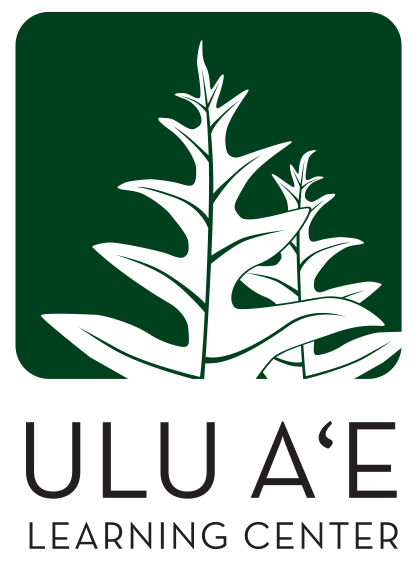After School Programs
After School Program is Now A Full Day Program
Our After School Program includes transportation for students from certain schools in Kapolei, ‘Ewa and Nānākuli. Students are transported from their schools to our learning center in Kalaeloa. Homework help, hana no‘eau enrichment lessons, and stewardship visits are provided. Ulu A‘e Learning Center uses a high touch, personalized approach in growing the hearts and minds of children during the out of school time though storytelling, Native Hawaiian practices and stewardship experiences.
ALOHA ‘ĀINA
Love for our places
Students are taught traditional names of places that exist in their community. They learn history through stories and mele. And they dig their hands deep into the soil, healing, restoring and rejuvenation the ‘āina. It’s through these unique experiences that they gain an appreciation for the place they live and become stewards of our land before entering high school.
Nene‘e and Hana ‘I‘o Programs
Ulu A‘e provides intersession programs during the fall, winter, spring & summer
NENE‘E is our intersession program where keiki ages 5 – 14 are given opportunities to explore their ‘āina from ma uka (mountain) to ma kai (sea). The program’s curriculum is place-based meaning that special focus is made to highlight the history and culture of the students’ community. Students engage in moʻolelo (stories), hana noʻeau (Native Hawaiian art and practices) and kuleana (land stewardship).
At the end of each program session, students present an ʻĀina Pledge in which they commit to establishing life long habits that support the health of our planet like using refillable water bottles, eliminating single use plastic and removing invasive plants from our natural environments.
HANA ‘I‘O is a hands-on, food preparation program for middle school students who want to grow their knowledge, skills and relationship to the animals they eat. Students explore the role their mountain plays in food production. They take part in the respectful and humane process of killing a pig. They participate in animal husbandry and learn safety and sanitation guidelines, knife skills, and about meat production here in Hawaii. By taking part in this program, students begin to think critically about waste and humane animal practices. They gain a deeper understanding of food abundance and begin to evaluate what they put in their bodies.

What I liked the most about kapa is pounding it. I also like stamping kapa because Hawaiians use it for clothes and art. I also like the materials we use. They are called hohoa, niho mano, iʻe kuku, and the kua laʻau, and the ʻiliʻili. That is what I like about kapa.
-Sylvie (Age 9)
It was hard to sand in the pū ‘ohe but when i blew it I had to get used to it and it was fun. I felt proud of myself.
-Ezekiel (Age 7)
The process of kapa that I enjoy the most is to strip the wauke. I donʻt know why but enjoy it so much also the opihi shells are shiny and it is calming to me.
-Emmie (Age 7)












